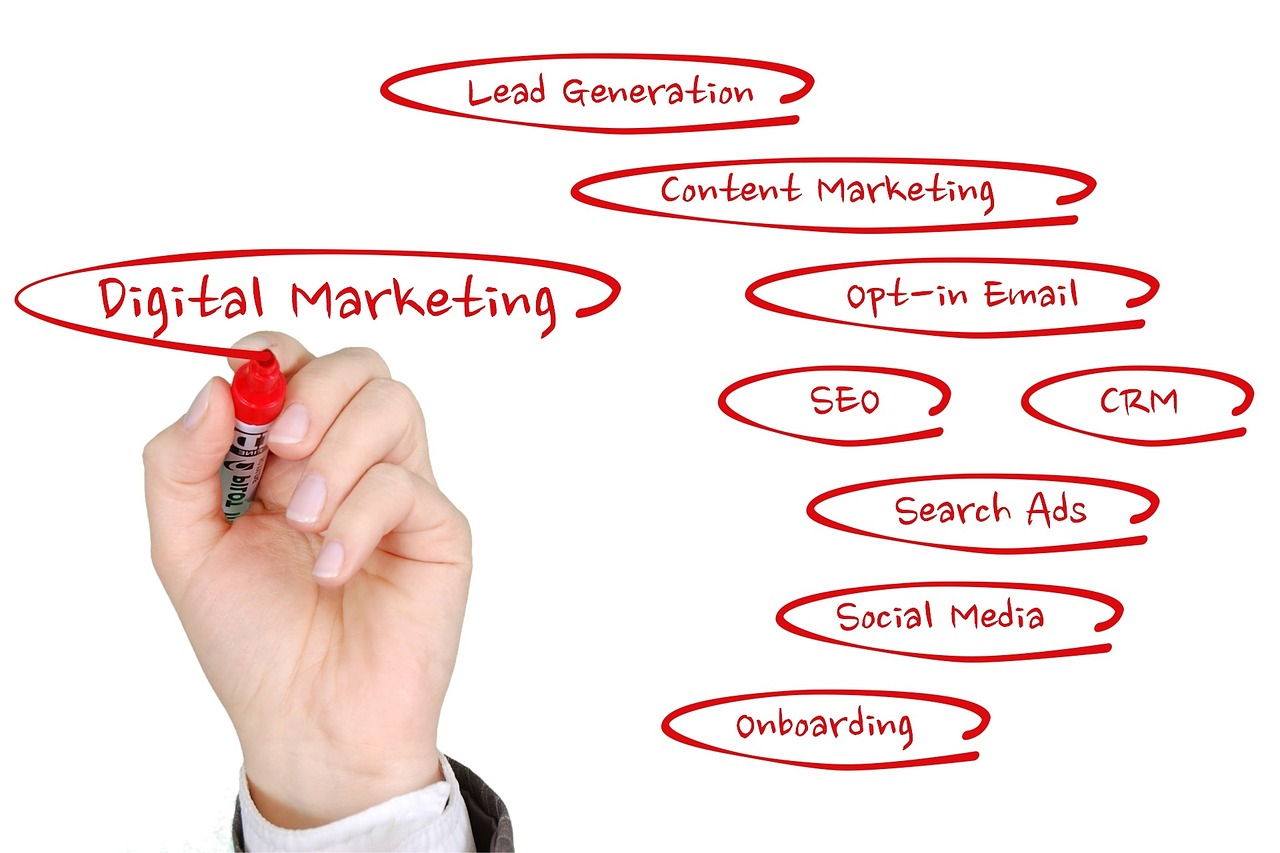When it comes to marketing an assisted living community today, remember: these aren’t your grandparents’ retirement communities!
In fact, the people living in them – and the children who may have to make the tough decision to help their parents move to one – more and more are members of the Rock and Roll Generation: Boomers and Generation X (their adult children). These people are up on online media!
Yes, as you well know, many people living in assisted living communities are those who gave birth to the Boomers (age 80 and above, with the average age 87). Most are women, at a 7:1 ratio.
Still, with Boomers and older members of Generation X helping their parents make the move, your marketing needs to be targeted in large part to their needs, concerns and desires. And you need to do it online.
These Adult Children Want INFORMATION, and LOTS of It
Making the decision to move either oneself or a parent into a residential community isn’t one that’s made overnight: it takes weeks, perhaps even months of thoughtful consideration. And what does a large part of that consideration entail? Research!
Your future residents and their children are looking for answers:
- When is it time to make a move?
- How do I afford it?
- How can I convince my spouse/parent to make the move?
- What do I do if they don’t want to move but they really should?
- What is it like to live there?
- What happens when I/my parent need(s) more care?
Inbound Marketing Provides Them This Information
Inbound marketing is a highly strategic form of marketing that attracts prospects to you by – among other things – giving them this information they are so hungry for. You provide this information via blog posts on your website, videos, ebooks, email campaigns, whitepapers, social media, and so on. (Compare this to traditional – or “outbound” – marketing, which “goes after” prospects by trying to “get” their attention via ads on television, radio, billboards, Yellow Pages, and so on.)
Instead, inbound marketing provides the information they seek where they are: online: 81 percent of shoppers research online before making a purchase and 62 percent prefer looking to a search engine for information, while just 29 percent of people want to talk to a salesperson.
The Different Parts of Inbound Marketing
You need to be providing this information in about six different online areas:
- Website
- Landing Pages
- Blogging
- Email Marketing
- Social Media
- Online Advertising
Additionally, we recommend one key offline component as well: event marketing.
For a detailed breakdown of all seven components, take a look below.
1: Your Assisted Living Community’s Website
Think of your website as your community’s front door: your brick-and-mortar presence undoubtedly is welcoming. The décor you’ve chosen inside is lovely and comfortable, yet modern.
Your website needs to be the same – welcoming and modern, in that it:
- Appeals to your target audience (known as personas), and is optimized with the keywords these personas use when looking for information on retirement communities.
- Displays well on laptops, smartphones and tablets. (This is critical because 32 percent of people ages 55 and older perform research online via a smartphone.)
- Is easy to navigate (visitors can find what they’re looking for quickly).
- Offers them the information in the ways they want to receive it (blog posts, video, podcasts, infographics, etc.).
Delivering the information they seek in the ways they want to ingest it is critical and so before you do much else, you will need to create target personas about the different members of your target audience (for instance: women 80 and over, adult children aged 55-70, income/financial resources, physical abilities, and so on).
2: Landing Pages
As you provide your website’s visitors with information-packed blog posts, video, etc, you’re going to want to offer them a more in-depth free report, or something of value that delves even deeper into a question or concern they may have.
You give them the free report in exchange for their email address, thus allowing you to continue to send them information as you guide them through their buyer’s journey.
They need to fill out a form to give you their e-mail address and that form will be located on a landing page (see our own example), which whets their whistle and piques their interest even more in your offering, guiding them along so that they fill out the form.
They receive the free offer as soon as they hit “send,” thus becoming a bona fide lead for you!
Your retirement community’s website will have several landing pages for different offers such as free reports, coming in for a free lunch and tour, and so on.
3: Blogging
Perhaps the best way to deliver the information your prospects want is via blogging. As you develop your persona descriptions, you’re going to discover what each of them – what your best prospects – want to know, learn, research, and about which they have questions.
You should write these blog posts to be meaty and provide substantial, objective information. Yes, you can talk about the benefits of living in an assisted living community, but you want to also point out the challenges. Honesty and transparency are paramount. In fact, transparency is critical, so we suggest you don’t hide the cost of living at your facility only for someone who actually comes to talk to a member of your sales team: put it out there for all to see!
Blogging honestly and providing solid information allows your future resident or her adult child to come to trust your expertise.
Someone researching assisted living communities in your area will find a blog post (you will have optimized it for certain keywords), read it and, if it’s filled with solid information, may search around your blog for more information. At the end of each blog post, is a call-to-action (CTA) button: the offer of a free report. Readers click on the CTA’s link and head to the report’s landing page (as described above).
4: Email Marketing
Once your website visitor provides your with her email address in exchange for the free report, she has immediately become a real lead, one to whom you can now send links to future blog posts, invitations to your facility’s open houses, offers for additional in-depth information, and so on.
Your relationship with your lead continues to grow: she continues to read your information, she attends an open house and takes a tour, she continues to receive your information, she has a meeting with a sales person, she continues to receive your information. Finally, when she’s ready to buy, she chooses your community as her/her parent’s new home.
5: Social Media
While your blog will be your primary vehicle for delivering your information to prospects, social media and online advertising will be the primary channels you will use promote and broadcast that information. (More about online advertising in number 6, below.)
In fact, social media is a primary step to get prospects to your website in the beginning of your marketing efforts.
While you will want to interact with your target audience on social media, you also should look at your social channels as a way to get your blog posts and free reports in front of as many eyeballs as possible.
Write those informative blog posts and then broadcast them via your social media channels using keywords (and social media ads that use those keywords) that you know your target market uses when searching for information related to retirement communities. They go to your site, read the post and then stick around and explore your website for more of the great information you provide them there.
You also can post links to your offers of free reports on social media.
Promote your social channels everywhere:
- All employees should have their email signatures contain links to your facility’s social media.
- Ask them to like and share your facility’s social posts on their personal channels.
- Place social icons at the bottom or top of blog posts so that visitors can share the article on their own social channels.
- Feature icons linking to your channels prominently on your website. Visitors can then click on them to get right to your Twitter account, Facebook page, etc.
6: Online Advertising
While you’ll spend most of your efforts on the five inbound marketing strategies listed above, when it comes to marketing your assisted living community, online ads (pay-per-click on search engines as well as on social media) truly can bring a terrific ROI on your time and investment.
You may find that you need to advertise on your social media channels just to be able to get your regular posts in front of your followers: Facebook, for example, is becoming more a paid media, with your posts showing up in the feeds of just 6.5 percent of your followers.
You should also be allocating a significant portion of your budget to Google search advertising (commonly called PPC or pay-per-click advertising) as well. This will help you reach those people who are closer to making a decision on an assisted living move-in and are actively researching and comparing their options.
Online ads’ cost can run up quickly, so make sure you choose the keywords your prospects actually use when they’re looking for information on assisted living communities. It’s also critical that you give a clear benefit in your ad (so that viewers will click on it) and make sure the ad views well on a smartphone/tablet.
7: Event Marketing
Holding events at your assisted living/retirement community probably is something you already do on a regular basis: you probably routinely offer a free lunch and tour to prospects, you hold Easter Egg hunts and visits with Santa Claus for your residents’ grandchildren and the public, you host seminars on health aging issues, dementia, and so on that are open to the public.
Keep it up, because if there’s anything we’re beginning to crave (or perhaps it’s a return to) in this online world of ours, it’s human connection.
You also may want to host some events in partnership with charitable organizations in your area, such as community health programs, dementia non-profits, libraries, places of worship, and so on.
Don’t forget to broadcast these events on your social media channels as well as in emails to those on your list. You also may want to notify your local news media: media coverage certainly can only help your marketing efforts!
Make sure you have a plan in place to gather names and contact information on attendees so that you may send emails to them (and make sure it’s clear to your attendees in whatever way you sign them up that they are going to be receiving email messages from you).
As you start building these seven parts of your marketing campaign (website, landing pages, blogging, social media, online advertising, and event marketing) you’ll know you’re well on your way to generating a highly efficient and successful marketing program for your assisted living community.
Expert Senior Living offers inbound marketing services, focused on helping senior living communities find their perfect prospects so that our clients will enjoy greater sales and residency rates.
Contact us if you find yourself in need of improving your communities proficiency in any of these areas!
See more at ClearPivot




